A tour de force exploration of coordination chemistry
A series of clear solutions are sequentially added to a "reaction pot." The reaction solution turns clear then white then coffee then white then clear then white then clear then yellow!
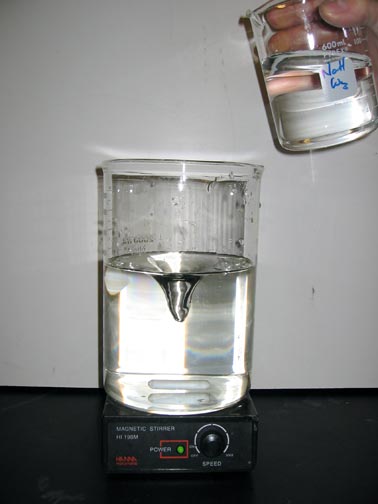
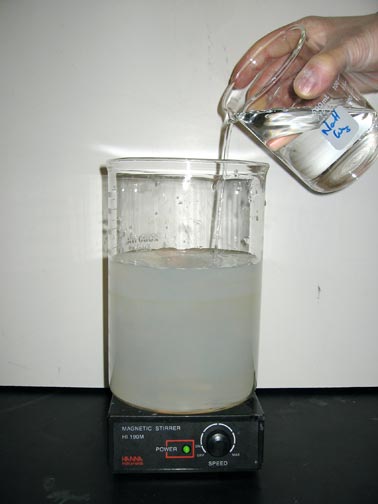
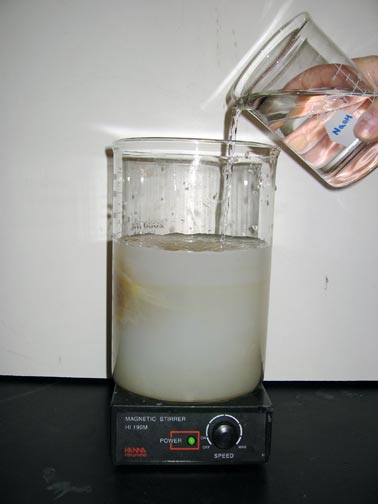
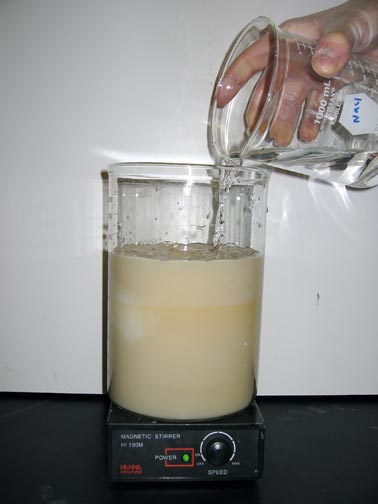
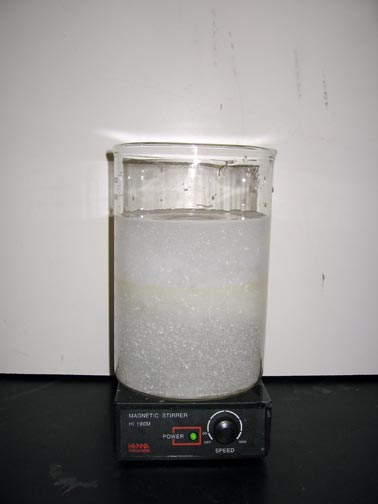
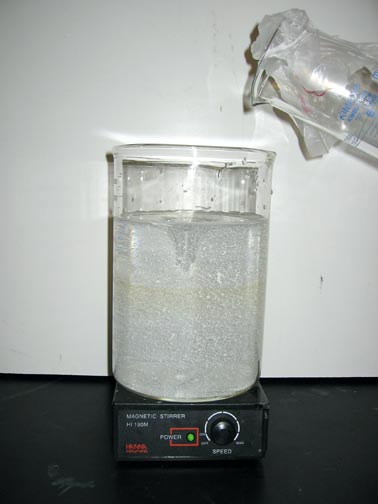
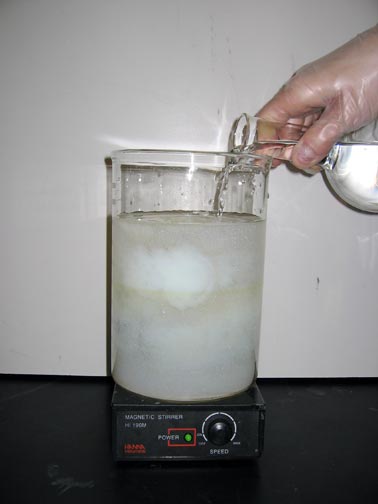
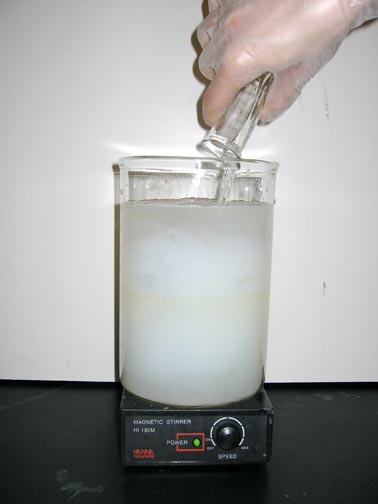
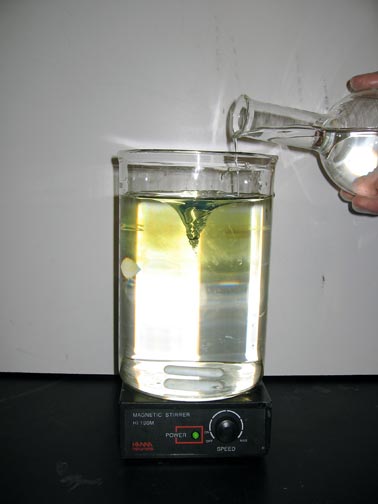
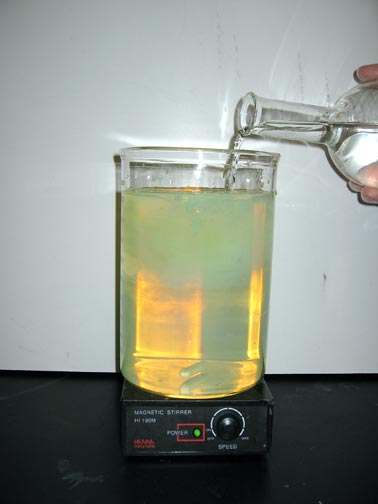
Ingredients: silver nitrate, sodium carbonate, potassium hydroxide, silver chloride, ammonia, sodium bromide, sodium thiosulfate, potassium iodide
Procedure: A partial recipe follows.
1. Prepare a solution of silver nitrate.
2. Add sodium carbonate solution until a white precipitate is observed.
3. Add potassium hydroxide solution until a coffee brown solution is observed.
4. Add sodium chloride solution until a white precipitate is observed.
5. Add ammonia solution until the solution clarifies.
6. Add sodium bromide solution until a white precipitate is observed.
7. Add sodium thiosulfate solution until the solution clarifies.
8. Add potassium iodide solution until a yellow precipitate is observed.
Understanding: The starting point is a clear solution of soluble silver nitrate salt. Upon the addition of a source of carbonate ion, the insoluble silver carbonate salt forms as a white precipitate of silver carbonate
2 Ag+(aq) + CO32-(aq) → Ag2CO3(s)
When a source of hydroxide ion is added to the silver carbonate, a "cafe au lait" of insoluble silver oxide complex with water is formedAg2CO3(s) + 2 OH-(aq) → Ag2O·H2O(s) + CO32-(aq)
That product complex is stoichiometrically equivalent to silver hydroxide. The addition of a source of soluble chloride ion to the silver hydroxide solution produces our old friend the white precipitate silver chlorideAgOH(s) + Cl-(aq) → AgCl(s) + OH-(aq)
When aqueous ammonia is added, the silver ion is again solublized, this time in the form of silver(I) diamine complex ionAgCl(s) + 2 NH3(aq) → Ag(NH3)2+(aq) + Cl-(aq)
When a source of aqueous bromide ion is added to the clear solution, a common component of gelatin photographic film is produced, a white precipitate of silver bromideAg(NH3)2+(aq) + Br-(aq) → AgBr(s) + 2 NH3(aq)
As in the photographic fixing process, the white silver halide precipitate can be solublized using a solution of "photographer's hypo" which is also known as sodium thiosulfate solutionAgBr(s) + 2 S2O32-(aq) → Ag(S2O3)23-(aq) + Br-(aq)
The clear solution of dithiosulfatoargentate complex ion is at last made cloudy againAg(S2O3)23-(aq) + I-(aq) → AgI(s) + 2 S2O32-(aq)
through the formation of a third silver halide precipitate, this time a yellow one, silver iodide.At each step, the reaction product is created through the application of LeChatelier's Principle. It is not necessary to quantitatively determine the amount of reactant required. We know qualitatively that if adequate reactant is added, we will push the equilibrium to the right and the formation of the desired product.
The quantum mechanics of a silver complex ion
Question: To the solution of yellow silver iodide precipitate is added a solution of sodium cyanide. The solution clarifies through the formation of dicyanoargentate complex ion
AgI(s) + 2 CN-(aq) → Ag(CN)2-(aq) + I-(aq)
What is the electron configuration of the silver ion? What is the hybridization of the atomic orbitals on the central silver ion? Are the ligands that coordinate the central silver ion strong or weak field ligands? Is the silver in a high or low spin state? Is the compound paramagnetic or diamagnetic?You can check your answers here.
You can check your answers here.
Predicting the final reaction product in the diverse chemical soup
Question:
To the solution of dicyanosilver(I) complex ion is added a generous volume of a sodium sulfide solution. Write the balanced net ionic equation for the reaction that occurs. Note the phase of each species and whether any precipitate is formed.